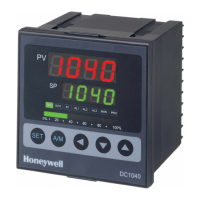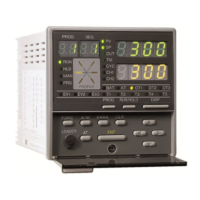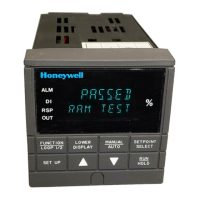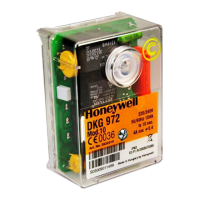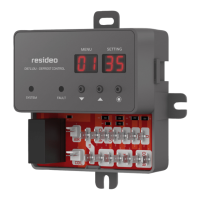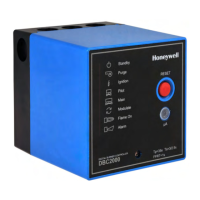APPENDIX
207 63-8594-02 Honeywell Economizers
Section 18 - Appendix
Glossary
Air Content Sensor—A sensor used to
measure certain components of the air in
a room or other supply source. It is used
as an input to adjust control sequences or
parameters. Carbon Dioxide (CO
2
) is
frequently measured as one component
of overall air quality to make adjustments
to ventilation controllers.
Air Quality Standard—A government
mandated regulation which specifies the
maximum contaminant concentration
beyond which health risks are considered
to be unacceptable.
Automatic Control Loop—A set of devices
that react to a change or imbalance in the
controlled variable by adjusting other
variables to restore the desired balance.
Balance Point—The outside air temperature
value at which the cooling equipment is
turned on. It is used to calculate the
savings from an economizer control
application.
Building-Related Illness—A diagnosable
illness with identifiable symptoms whose
cause can be directly attributed to
airborne pollutants within a building such
as Legionnaires disease or
hypersensitivity pneumonitis.
Carbon Footprint—A measure of the
greenhouse gases (GHG) that are
produced by activities of a person, or a
business that involve burning fossil fuels.
Changeover Control—The control device
used to switch over from outside to return
air or visa versa to make optimum use of
outside air for free cooling.
Controlled Medium—The medium in which
the controlled variable exists. In a room
temperature control loop, the controlled
variable is the space temperature and the
controlled medium is the air within the
room.
Controlled Variable—The quantity or
condition that is measured and controlled.
Demand Control Ventilation—An energy
efficiency measure to reduce outdoor air
intake and the energy required to
condition the outdoor air when a space is
not occupied at the maximum design
density.
Differential Enthalpy—The selection of a
supply air source for the mixed air based
on the lower enthalpy value derived from
two enthalpy sensors located in the
outside and return air sources.
Most Honeywell electronic enthalpy
economizer modules are based on a
similar setpoint configuration. The
available settings A, B, C and D are for
single sensor or high limit enthalpy
control. For differential enthalpy the dial is
turned to D.
